How did an American company that started a French factory to make car headlights start making art glass? And how did that same company wind up with an art glass making sister company in Ohio? The answers to those questions is the story of the two Verlys glass companies.
But before you get to the art glass, you have to go back a little further to the Holophane Glass Company. The company was founded in the late 1890s in London and came across the pond to open an office on Broadway in Manhattan a couple of years later. Their big innovative leap took place in the 1920s with the help of a team of light scientists. Holophane glass reflectors, or shades, are made of borosilicate glass, making them durable. They have many small prisms molded in that allow light to be reflected both up and down. It was a revolutionary discovery that made lighting large industrial spaces possible and makes those vintage lights still prized today.
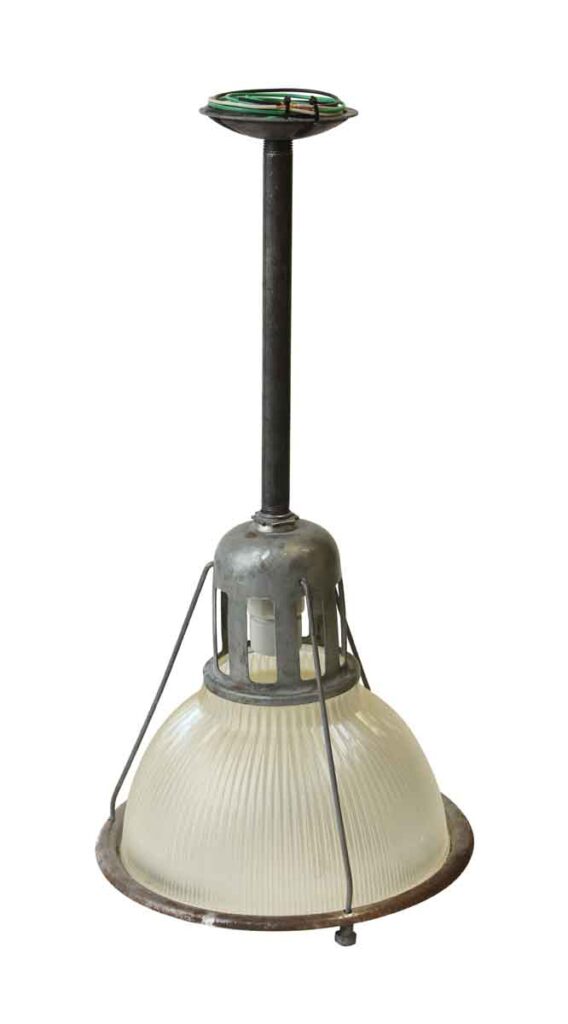
The company’s scientific approach to innovation perhaps explains how they came to make headlamps for cars, another emerging industry of the time. According to the Glass Encyclopedia, in 1920, the Holophane Glass Company opened a satellite factory in Les Andelys, France–the Societe Holophane Francais– specifically to make headlamps.
While Societe Holophane Francais was busy making headlights, glassmaker Rene Lalique was dazzling the world with his art deco art glass designs. It didn’t take long for Societe Holophane Francais to notice what Lalique was up to and launch their own art glass subsidiary, the Verriere d’Andelys (or Andelys Glassworks). The name “Verlys” is a mashup of “Ver” from Verriere and “lys” from Les Andelys. And that is how in 1925, the first of the two Verlys glass companies was born, specializing in intricate blown cased-glass vessels. By the 1930s, they switched to producing molded glass closer in style to Lalique’s work. Matte frosted and opalescent glass, predominantly colorless, with motifs similar to Lalique including flowers, birds and deco-inspired geometrics.
Verlys art glass crossed the Atlantic in 1935, establishing a Newark, Ohio, factory where imported French molds were used to make the same kind of glass in mostly the same patterns. Glass from this second factory was dubbed Verlys of America.
The war years took their toll on art glassmakers. Production declined at both factories throughout the 1940s. The American facility ceased production in the 1950s. But their patterns had extended lives in America through other makers. The molds were leased to neighboring Heisey glass for a couple of years in the mid-50s. Fenton Art Glass bought the molds in 1966 and produced some of the pieces.
The French factory ceased art glass operations in the early 1960s.
And that is the story of the rise and fall of the two Verlys glass companies.
How to identify where and when Verlys was made?
Same molds, many makers. How do you tell where your piece was made? Blissfully, it’s not complicated.
- French Verlys almost always has a molded signature.
- American Verlys is signed with an engraving pen.
- Heisey pieces made from Verlys molds are unsigned.
- Fenton pieces made from Verlys molds bear the Fenton signature.
Verlys France oval cup with with molded signature, offered by brocnard on eBay, $375.
Tassel bowl by Verlys of America offered by NextStage Vintage, $95.
Fenton glass made in a Verlys mold.
Extra Credit:
These sources were useful in writing this post:
Verlys Glass: a short explanation from the Glass Encyclopedia
Fenton Verlys of America Molds from carnivalglassclubs.com
Pin it: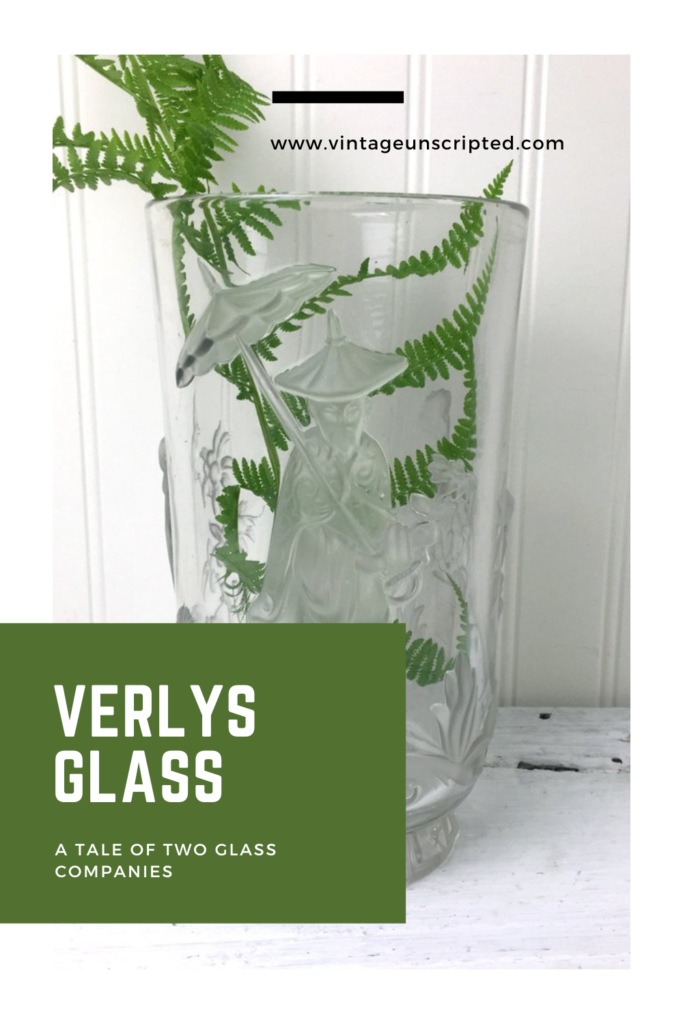


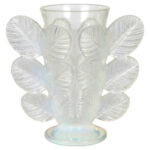
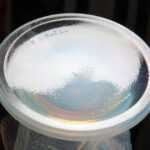
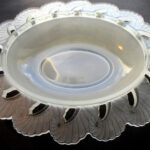
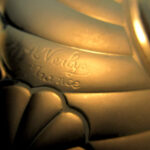
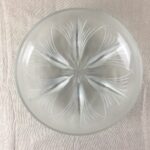
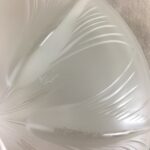
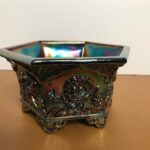
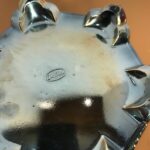



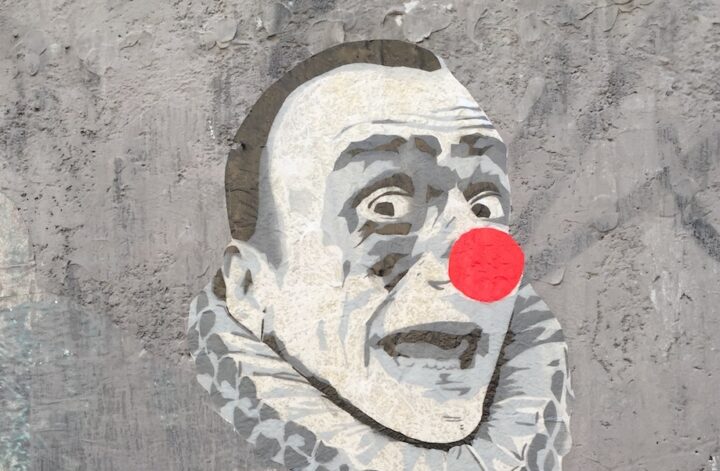
6 comments
Thanks for this interesting & informative post. Can you shed any light on this piece I came across on ebay(333734761938) while researching one of my own? The auction was for 3 bowls with a presumably original paper card that reads: THE VERLY PINE CONES BOWL 1935/1986. Any idea of who produced them?
Thanks.
Thanks for your kind words. It probably all comes down to how the pieces are signed, or not signed in the case of some of the later companies. This is the challenge with a lot of vintage glass from companies that sold their molds. No matter who made them, they are beautiful pieces.
Great info, thanks for sharing it. In case you’re interested;
The Fenton Hexagon flower bowl repro was from their Original Formula Carnival Glass line, introduced in 1970 when Fenton first began applying a Fenton logo to their glassware. It was sold with this hang tag attached.
https://ibb.co/5vL1S8t
I have a “Canards Sauvages” Verlys console bowl.
My question is about the signature, signatures in this case.
In the middle of the inside of the bowl, is a very small, embossed “Verlys”.
On the underside, in the center, it is diamond etched, very small again, “Verlys”.
I’m a bit confused. The embossed signature, on the inside, would indicate it was made in France.
The etched signature, on the bottom, would indicate it was made in the USA.
Please help.
Thank you very much for your expertise.
Since the American glass molds did not have the signature in them, perhaps it is French? I wonder if at some point the French pieces were imported to the American company and signed again? Very interesting!
I found the most interesting lamp at an out of the way shop, perfect for Asian-Nouveau/Hollywood Regency decor. Upon inspection and research, it appears to be a Fenton Mandarin Vase from the Verlys mold. It has the Fenton in an oval mark, but it looks like it may have additional markings…. IMPOSSIBLE TO DECIPHER! (Since it’s frosted/not quite opaque.) Would you have any additional information for the piece? How much value has it lost, if any, being made into a high end lamp? Any input is desired!